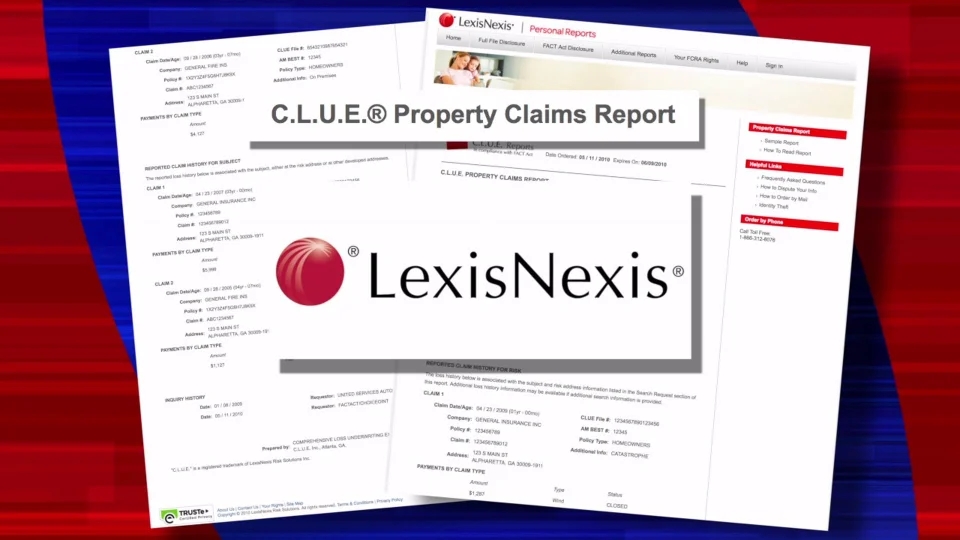
C.L.U.E. (Comprehensive Loss Underwriting Exchange) is a claims history database generated by LexisNexis. Home and automobile Insurance companies use the report to gather information about a customer or potential customer to decide if they will offer coverage and how much they will charge. The report contains information on home and auto insurance claims made within the last 7 years.
Each time a claim is filed the insurance provider documents details related to the claim such as the claim type, date, and payout amount.
LexisNexis relies on insurance companies to share claims information to generate C.L.U.E. reports. Any company that contributes data has access to the C.L.U.E. report. If an insurance company does not subscribe to C.L.U.E. their losses will not be included in the report.
What Information is Included in a C.L.U.E. Report?
The C.L.U.E. report includes policy information such as name, address, date of birth, policy number, claim information such as date of loss, type of loss, and amounts paid, and a description of the property covered. An auto coverage report includes detailed vehicle information such as vehicle make/model, year and VIN number.
A C.L.U.E. report can be blank if the home or auto owner did not file any insurance claims in the past several years or if the individual was not covered by an insurance company that reports claims to C.L.U.E.
A blank report does not necessarily mean that there was no damage to the home or auto, it just indicates that the owner did not file a claim for the damage.
How Do I Get a Copy of My C.L.U.E. Report?
Under the federal Fair Credit Reporting Act, you can request a copy of your C.L.U.E. report once a year from LexisNexis by requesting the report online, by U.S. mail or by phone.
All request options can be found on their website.
https://consumer.risk.lexisnexis.com/
When you request your report online, your information will be verified, and they will process your report request. You will receive a letter via U.S. Mail with additional information explaining how to access your report online.
To Request Your Consumer Disclosure Report by U.S. Mail
Fill out the printable request form. Once you have downloaded and printed a copy of the request form, complete all the sections, and send the form back to them via U.S. Mail.
LexisNexis Risk Solutions Consumer Center
P.O. Box 105108
Atlanta, GA 30348-5108
Consumers may also request a Consumer Disclosure Report via phone at 1-866-897-8126.
What If I Find Inaccurate Information in My C.L.U.E. report?
If you find errors, contact LexisNexis and report the problem. LexisNexis will contact the insurance company and ask them to review your request for correction. You can add an explanation to an item in the report and that will be included in all future reports. You will be notified with the results within 30 days.
When Should You Request a C.L.U.E. Report?
If you are shopping for auto or home insurance it is a good idea to get a copy of your report, this ensures that you are receiving a fair quote based on the data included in your report. It also allows you to check your report for errors and correct any errors that are found before getting an insurance quote. Incorrectly listed claims can significantly impact insurance rates. You don’t want to pay a higher rate due to a mistake in your report.
If you are selling your home the report can assure the buyer that there are no hidden problems that you filed an insurance claim for but did not disclose to them. It will show them the claims history on the property for the last 5-7 years. If your report is very clean or blank this can be a plus when making a sale. Potential buyers will feel more comfortable buying a home that has a claim-free history.
If you are buying a home or automobile, ask the seller for a copy of the C.L.U.E. report. Having a history of the claims that have been filed will help you make an informed decision about the purchase. Repeated claims in a C.L.U.E. report may be cause for concern. It will also give you a listing of past damage to the property.